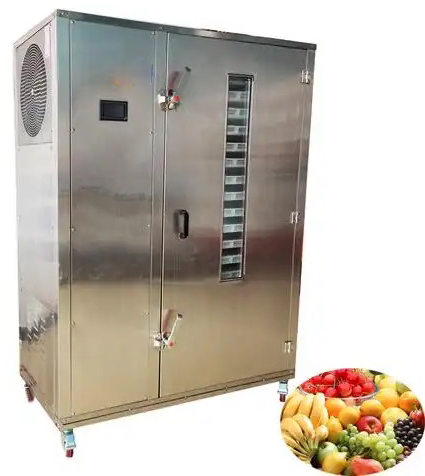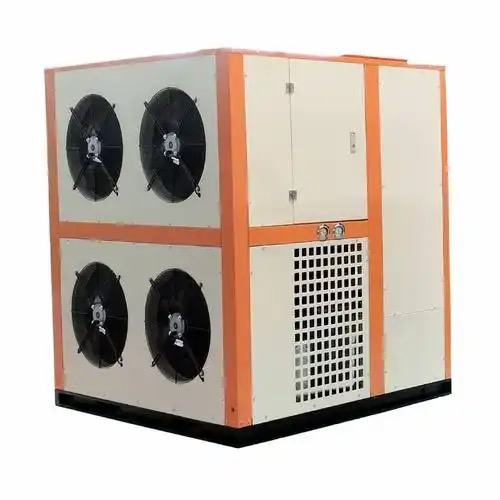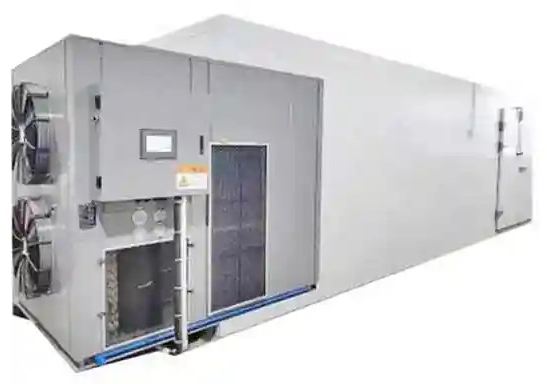
Content Menu
● Introduction
● Understanding Heat Pump Dryers
● How Heat Pump Dryers Work
● Advantages of Heat Pump Dryers for Food Processing
>> 1. Energy Efficiency
>> 2. Preservation of Nutritional Value
>> 3. Enhanced Flavor and Color
>> 4. Versatility
>> 5. Reduced Risk of Over-Drying
● Applications of Heat Pump Dryers in Food Processing
>> 1. Fruit Drying
>> 2. Vegetable Drying
>> 3. Herb Drying
>> 4. Meat Drying
>> 5. Seafood Drying
● Choosing the Right Heat Pump Dryer
>> 1. Capacity
>> 2. Temperature Control
>> 3. Energy Efficiency Ratings
>> 4. Maintenance Requirements
>> 5. Brand Reputation
● Future Trends in Heat Pump Drying Technology
● Conclusion
● Frequently Asked Questions
>> 1. What is the main advantage of using a heat pump dryer for food?
>> 2. Can heat pump dryers be used for all types of food?
>> 3. How does a heat pump dryer differ from a traditional dryer?
>> 4. What should I consider when purchasing a heat pump dryer?
>> 5. Are heat pump dryers environmentally friendly?
Introduction
In the world of food processing, drying is a crucial step that significantly impacts the quality, shelf life, and flavor of food products. As a leading manufacturer of food drying machines in China, we specialize in providing OEM services to international brands, wholesalers, and producers. While heat pump dryers are often associated with laundry, their technology has found a valuable application in the food industry. This article explores the benefits of heat pump dryers for food processing, their operational principles, and how they compare to traditional drying methods.

Understanding Heat Pump Dryers
Heat pump dryers utilize a sophisticated technology that allows for efficient moisture removal from food products. Unlike conventional dryers that rely on high temperatures and direct heat, heat pump dryers operate at lower temperatures, making them ideal for preserving the nutritional value and flavor of food.
How Heat Pump Dryers Work
Heat pump dryers function by circulating air through a closed-loop system. The process involves three main components: the evaporator, the compressor, and the condenser.
1. Evaporator: The evaporator absorbs moisture from the food. As the air passes over the evaporator coils, the moisture condenses and is collected.
2. Compressor: The compressor then compresses the refrigerant, raising its temperature and pressure.
3. Condenser: Finally, the hot refrigerant passes through the condenser, where it releases heat to the air, which is then circulated back into the drying chamber.
This cycle continues until the desired moisture content is achieved in the food product.
Advantages of Heat Pump Dryers for Food Processing
1. Energy Efficiency
One of the most significant advantages of heat pump dryers is their energy efficiency. They consume less energy compared to traditional drying methods, which can lead to substantial cost savings for food manufacturers. The ability to recycle heat within the system means that less energy is wasted, making it an environmentally friendly option.
2. Preservation of Nutritional Value
Heat pump dryers operate at lower temperatures, which helps preserve the nutritional content of food. High temperatures can degrade vitamins and minerals, but with heat pump technology, food retains more of its natural goodness.
3. Enhanced Flavor and Color
The gentle drying process of heat pump dryers helps maintain the flavor and color of food products. This is particularly important for fruits and vegetables, where vibrant colors and rich flavors are essential for consumer appeal.
4. Versatility
Heat pump dryers can be used for a wide range of food products, including fruits, vegetables, herbs, and even meats. This versatility makes them an excellent choice for food manufacturers looking to diversify their product offerings.

5. Reduced Risk of Over-Drying
Traditional drying methods often lead to over-drying, which can negatively affect the texture and taste of food. Heat pump dryers provide precise control over the drying process, reducing the risk of over-drying and ensuring consistent results.
Applications of Heat Pump Dryers in Food Processing
1. Fruit Drying
Heat pump dryers are particularly effective for drying fruits. The low-temperature drying process helps retain the natural sugars and flavors, resulting in delicious dried fruits that are perfect for snacking or use in recipes. For instance, apples, bananas, and berries can be dried to create healthy snacks that maintain their taste and nutritional value.
2. Vegetable Drying
Vegetables can also benefit from heat pump drying. The process helps maintain their color and nutritional value, making them ideal for soups, stews, and other dishes. Vegetables like carrots, peas, and bell peppers can be dried and stored for long periods without losing their essential nutrients.
3. Herb Drying
Herbs are sensitive to heat, and traditional drying methods can lead to loss of flavor and aroma. Heat pump dryers provide a gentle drying environment that preserves the essential oils in herbs, resulting in high-quality dried herbs. Basil, oregano, and thyme are just a few examples of herbs that can be effectively dried using this method.
4. Meat Drying
For manufacturers producing jerky or other dried meat products, heat pump dryers offer a controlled environment that ensures safety and quality. The ability to maintain consistent temperatures helps prevent bacterial growth while achieving the desired texture. This is particularly important for products like beef jerky, where moisture control is critical for safety and flavor.
5. Seafood Drying
Heat pump dryers are also suitable for drying seafood, such as fish and shrimp. The low-temperature drying process helps preserve the delicate flavors and textures of seafood, making it an excellent choice for creating dried fish snacks or ingredients for soups and stews.
Choosing the Right Heat Pump Dryer
When selecting a heat pump dryer for food processing, several factors should be considered:
1. Capacity
The capacity of the dryer should match the production needs of the business. Larger operations may require industrial-sized dryers, while smaller businesses can opt for compact models. Understanding the volume of food to be dried will help in selecting the appropriate size.
2. Temperature Control
Look for dryers with precise temperature control features. This allows for customization based on the specific food product being dried. Different foods require different drying temperatures, and having control over this aspect can significantly improve the quality of the final product.
3. Energy Efficiency Ratings
Choose models with high energy efficiency ratings to maximize cost savings and minimize environmental impact. Energy-efficient models not only save money but also contribute to sustainability efforts in food production.
4. Maintenance Requirements
Consider the maintenance needs of the dryer. Models that are easy to clean and maintain will save time and reduce downtime in production. Regular maintenance is essential to ensure the longevity and efficiency of the dryer.
5. Brand Reputation
Research the manufacturer’s reputation and customer reviews. A reliable brand with a history of producing quality equipment is essential for long-term satisfaction. Investing in a reputable brand can lead to better support and service in the future.
Future Trends in Heat Pump Drying Technology
As technology continues to evolve, heat pump dryers are becoming more sophisticated. Innovations in sensor technology and automation are making these machines even more efficient and user-friendly. For example, some modern heat pump dryers come equipped with smart technology that allows users to monitor and control the drying process remotely via smartphone apps. This level of control can help optimize drying times and energy usage, further enhancing the benefits of heat pump drying.
Additionally, as the demand for sustainable food processing solutions grows, heat pump dryers are likely to become more popular. Their energy efficiency and ability to preserve food quality align well with the increasing consumer preference for environmentally friendly products.
Conclusion
Heat pump dryers represent a significant advancement in food drying technology. Their energy efficiency, ability to preserve nutritional value, and versatility make them an excellent choice for food manufacturers. As the demand for high-quality dried food products continues to grow, investing in a heat pump dryer can provide a competitive edge in the market.

Frequently Asked Questions
1. What is the main advantage of using a heat pump dryer for food?
The main advantage is energy efficiency, which leads to cost savings and better preservation of food quality.
2. Can heat pump dryers be used for all types of food?
Yes, heat pump dryers are versatile and can be used for fruits, vegetables, herbs, and meats.
3. How does a heat pump dryer differ from a traditional dryer?
Heat pump dryers operate at lower temperatures and recycle heat, making them more energy-efficient and better for preserving food quality.
4. What should I consider when purchasing a heat pump dryer?
Consider capacity, temperature control, energy efficiency ratings, maintenance requirements, and the manufacturer’s reputation.
5. Are heat pump dryers environmentally friendly?
Yes, they are more energy-efficient than traditional dryers, reducing overall energy consumption and environmental impact.












